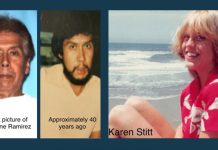
SEATTLE, Oct. 3 (UPI) — New analysis revealed a surprising amount of biological activity along urban shorelines in the Pacific Northwest. Scientists at the University of Washington were able to locate and measure coastal biomass by sequencing floating DNA — literally, DNA floating in the water.
“It is now possible to use genetic traces in water samples to look at the effects of human activities on ecosystems,” Ryan Kelly, a UW assistant professor of marine and environmental affairs, explained in a news release. “It’s totally remarkable to me that what appears to be plain water can tell you all of this information about what animals are present.”
The process doesn’t involve decoding massive strands of DNA. Instead, researchers identify tiny bits of genetic material deposited by ocean species as a way to document local biological activities.
The floating DNA acts like fingerprints. Biologists call the genetic evidence “environmental DNA,” or eDNA. The analysis method identifies specific genetic biomarkers among the eDNA. Different types and amounts of genetic markers reveal the types and amounts of various species living in a local ecosystem.
According to a new study, published this week in the journal PeerJ, eDNA suggests urban shorelines in the Puget Sound host more densely populated communities of marine life than do more remote locations. Scientists found mud-dwellers like clams were especially abundant.
“Clams and other things that live in mud seem to like living near cities, which is really interesting,” Kelly said. “It suggests that maybe humans are subsidizing mudflats, or it may just as well be the converse — maybe humans tend to live in really protected areas that are the same environment clams happen to like.”
Though biomass was greater along urban shorelines, marine life near cities tended to be more homogeneous. More remote animal communities were more diverse, the research showed.
The analysis of eDNA — as opposed to over ecological assessment methods, like counting species — offers scientists a faster, more efficient way to measure the impact of human development on animal communities. Researchers say their methods could be replicated in other bodies of water, like the Hudson River or Chesapeake Bay.
“I’m excited because I think if you can make it easier for people to do these sorts of broad scale surveys, they will do it,” Kelly said. “It’s a much more powerful method.”





